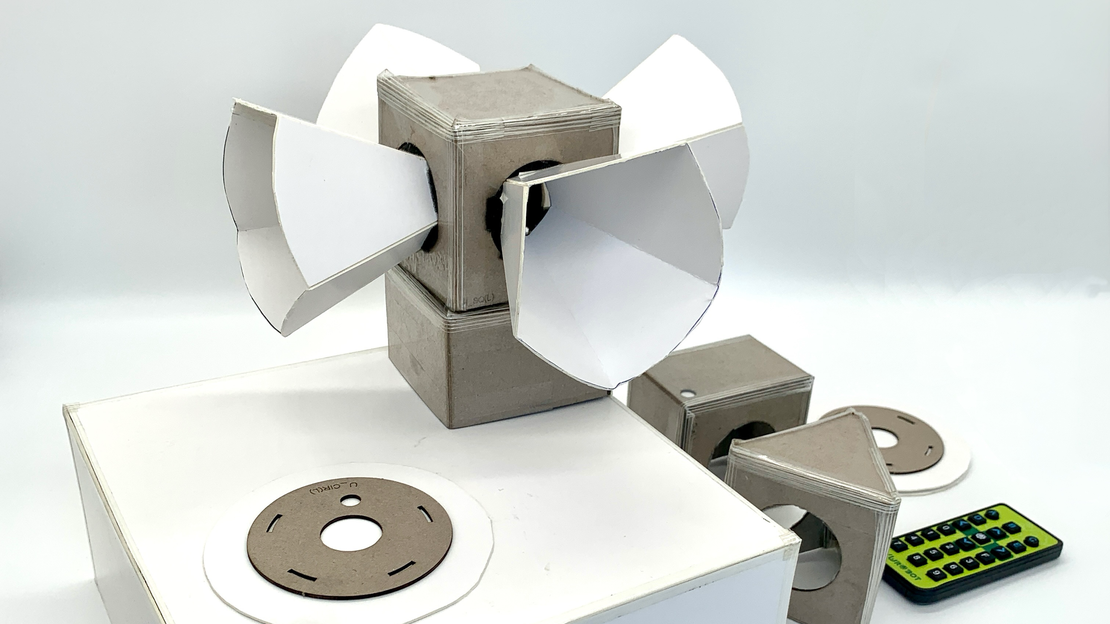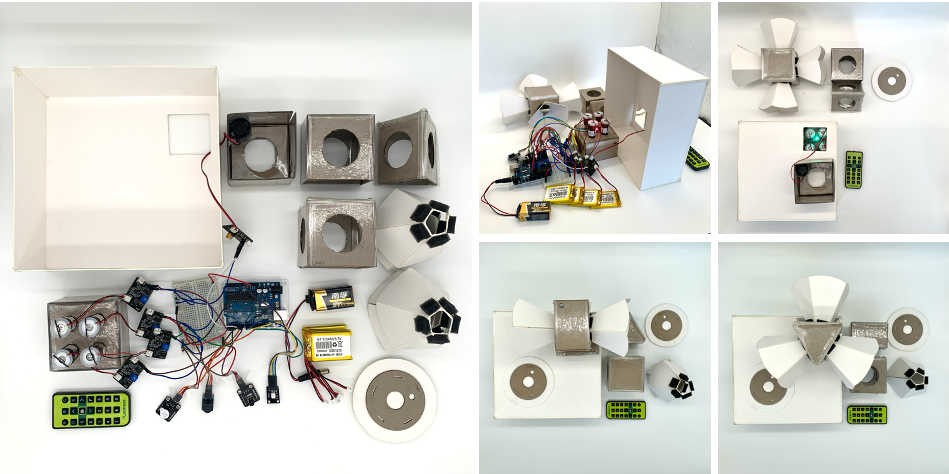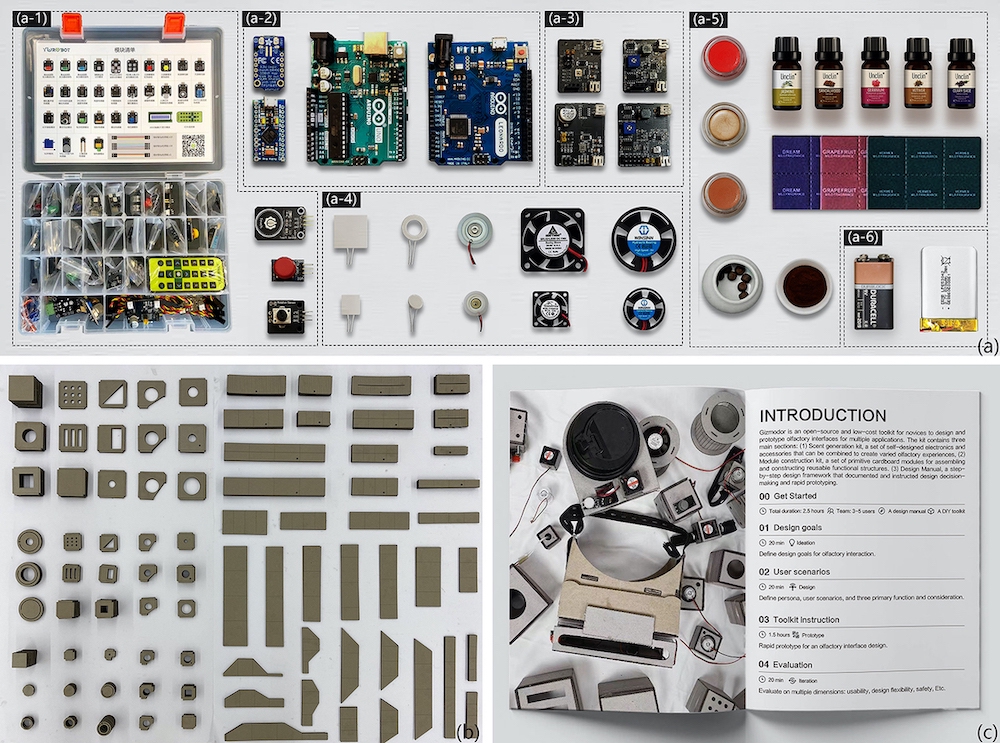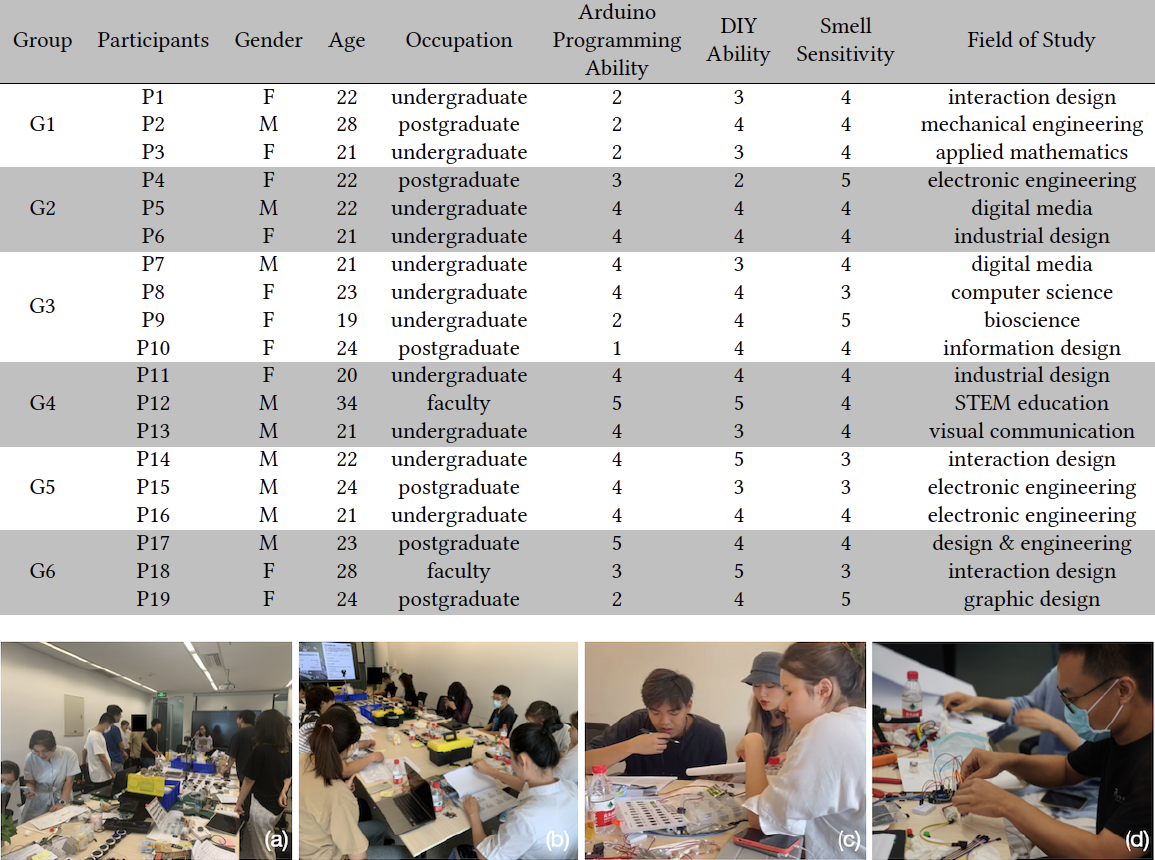
Interactive Olfactory Training Device for Alzheimer's Patients
- Individual
- Projects
- September 15, 2021
Integrated multisensory therapy with olfactory training by using metaphor design. Implemented a prototype with Arduino and self-designed PCB, providing an accessible and enjoyable rehabilitation training experience for elderly with Alzheimer’s in the nursing home.
1. A Toolkit for Designing and Rapid Prototyping Olfactory Interfaces
Before designing the device, I participated in developing a modular DIY kit with Arduino, self-designed PCB and cardboard, odor sources and design manual. Then we organized a formal workshop to gain a preliminary understanding of the usability of the toolkit.
2. Prototype Design
Olfactory training is increasingly sought after, particularly for Alzheimer’s patients residing in nursing homes. It has been shown to foster the regeneration of hippocampal neurons and mitigate the deterioration of olfactory abilities. Nevertheless, the scarcity of specialized equipment poses challenges in standardizing the training methods, including the precise quantity and timing of scent dispersion. My research led me to conclude that incorporating multisensory stimuli into the training proves more efficacious than solely focusing on olfactory cues. This approach addresses the prevalent issue of memory loss among the elderly afflicted with Alzheimer’s disease.
In response to these findings, I innovated a device inspired by the familiar form of a phonograph, reimagined through a metaphorical and multisensory design approach. Picture a conceptual phonograph capable of emitting an array of scents, accompanied by synchronized lighting and soundscapes. Utilizing Arduino, I developed a prototype aimed at facilitating user testing.
This project, adhering to medical guidelines for olfactory training, employs Arduino for hardware integration and programming. This setup controls an ultrasonic atomizer to cycle through four distinct scents sequentially. Each scent is paired with corresponding lights and sounds, enhancing guidance and support for memory recall in patients. Users can easily switch modes and adjust scent concentrations using an infrared remote control.


3. Application scenarios
The design incorporates two notable innovations for enhanced usability:
- The device features modular components, allowing for flexible use by varying numbers of patients—ranging from one to four—simultaneously within a nursing home setting.
- It includes a disposable, easily replaceable flaring horn, which significantly improves hygiene standards.


